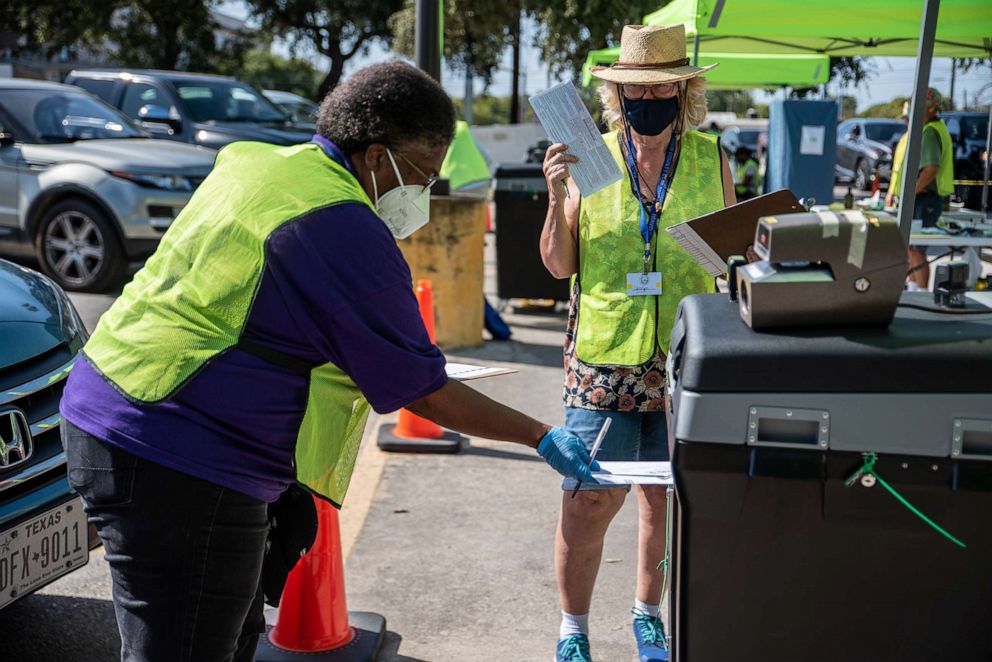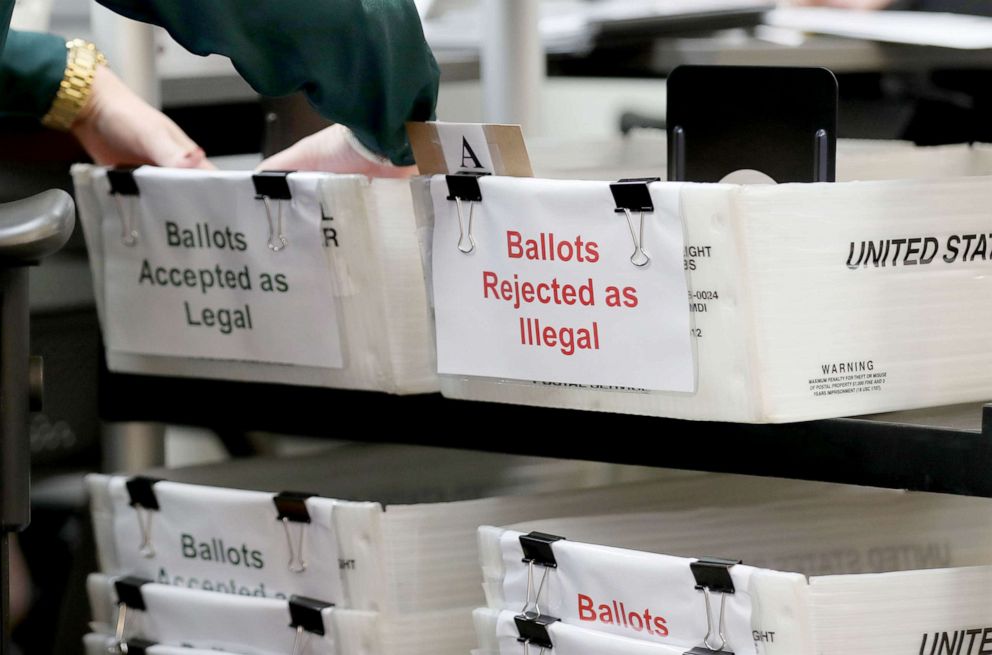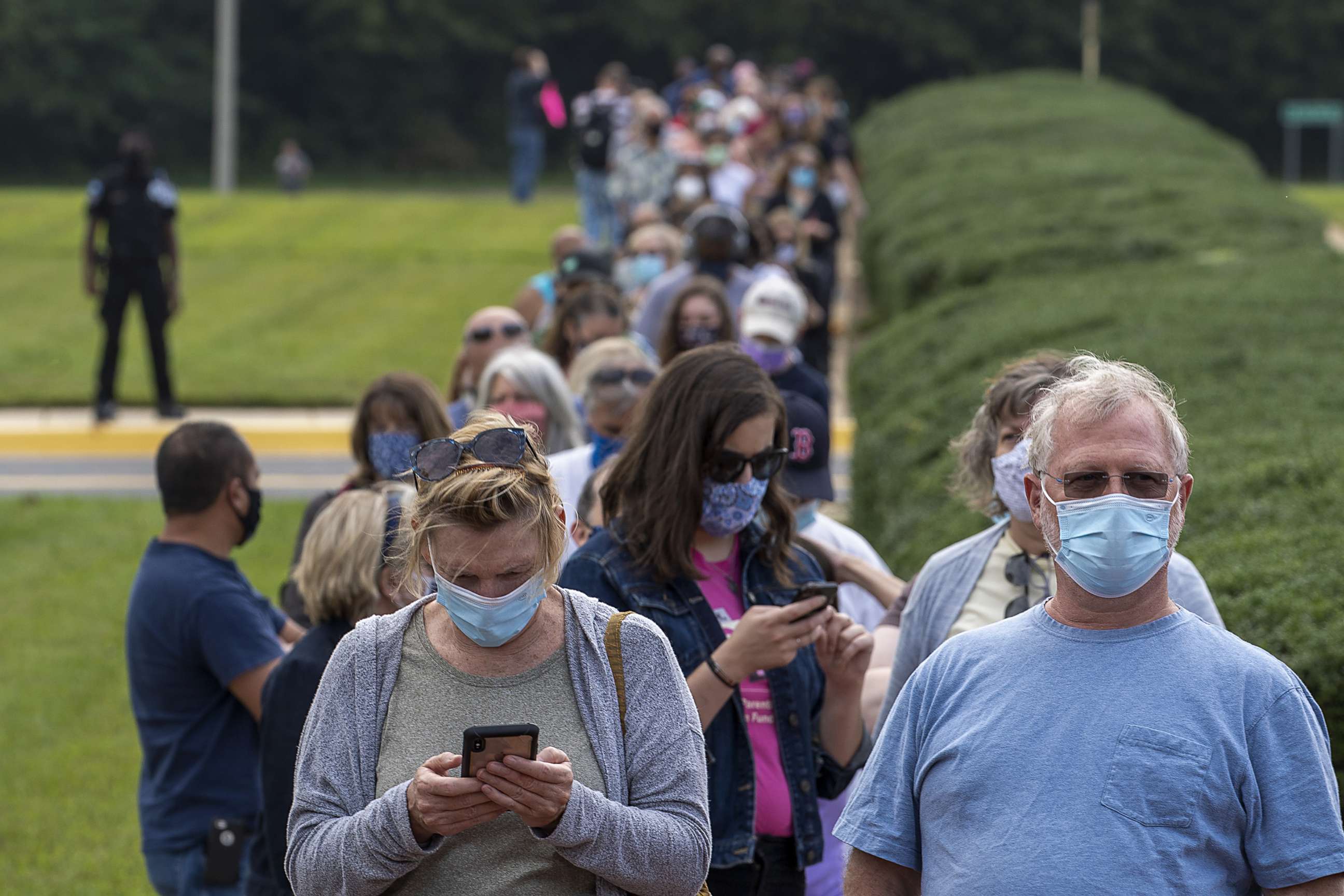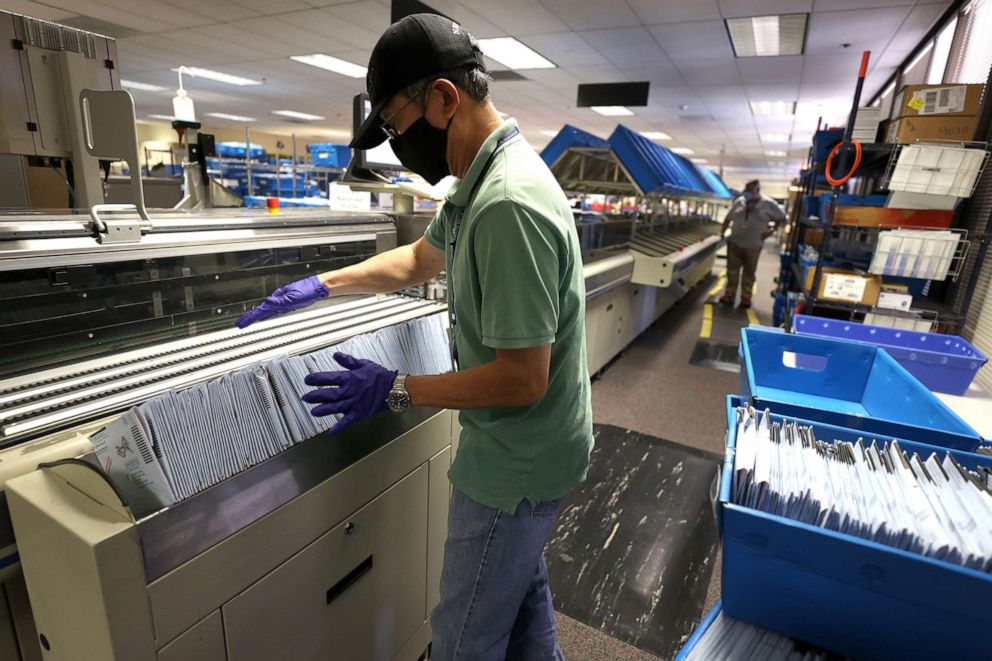Election 2020: Why voting in the coronavirus pandemic will be unlike any other year
Voting by mail is "going to be the real story of this cycle," one expert said.
This year's general election is shaping up to be one for the history books. Between anticipated mail-in ballot records, early voting surges and a slew of novel coronavirus-related safety precautions, the global pandemic has shaped almost every facet of voting.
State and local election officials have been gearing up for this most unusual election cycle for months. With early voting already underway in all 50 states, here's what voters can expect leading up to Nov. 3, and beyond.
Mail-in voting surge

Often a service used by those living overseas, such as the military, but increasing in popularity, mail-in voting has taken on new significance in the pandemic, with more than 80 million requested so far in this general election cycle, double the previous presidential election and more than half the total vote cast in 2016.
As of Oct. 14, more than 1.5 million vote-by-mail ballots have been returned in California -- far surpassing the 150,000 at the same point in the season in 2016 -- according to the Secretary of State's office. That's in a state that already had a significant percentage of voters who chose to cast ballots by mail. This year, the state also decided to mail ballots to all active voters for the first time -- one of the major ways voting by mail has been made more accessible for this year's election.
Voting by mail is "going to be the real story of this cycle," Matthew Weil, director of the Elections Project at the Bipartisan Policy Center, told ABC News. "The jump from 2016 to 2020 is going to be huge," he said.
In the 2016 general election, 33,378,450 absentee ballots were returned, according to the U.S. Election Assistance Commission -- representing 23.7% of all ballots cast.
Based on evidence from primary elections since COVID-19 lockdowns began, the Bipartisan Policy Center estimated that 50% to 70% of all ballots cast will be absentee this year. Weil now estimates that number to be on the lower end of that range, noting that "even 50% will be a huge increase over 2016."
For the general election, at least 30 states plus the District of Columbia have made at least some changes that will make it easier and more accessible for voters to cast their ballots from home. These changes include removing strict excuse requirements or allowing COVID-19 concerns to be a valid excuse to vote absentee, allowing ballot drop boxes, offering prepaid postage on election mail and proactively sending all active registered voters applications to request an absentee ballot -- with some, such as California, skipping that step and sending the actual ballots.
Unlike in elections past, there's also a partisan preference for mail-in ballots, Weil noted. Nearly 10 million more registered Democrats have requested absentee ballots compared to registered Republicans, according to the U.S. Elections Project out of the University of Florida.
Adding to the complexities this year are President Donald Trump's repeated attempts to sow doubt on mail-in voting through false and conspiratorial claims about voter fraud. Legal experts told ABC News there hasn't been evidence of widespread or systematic voter fraud with mail voting.
Voters should be wary of making mistakes with their mail-in ballots. In the 2016 general election, around 1% -- 318,728 -- of absentee ballots were rejected, according to the Election Assistance Commission. The most common reasons for rejection were "missing the deadline, the signature on the ballot not matching the signature on the state’s records, and the ballot not having a signature," the commission said.
That rejection rate remained small overall in 2018, but growing, at 1.4%, according to an ABC News analysis.
"With a lot of voters voting in a different way than they ever had before," Weil said, "are we going to see a higher number of these absentee ballots rejected?"
Find out how to fill out your mail-in ballot correctly and avoid getting it rejected here.

Long lines vs. long waits
With early voting already underway in every state, some counties have seen record-breaking numbers of in-person voters.
Amid the historic turnout, long lines have been reported at some polling locations -- though experts are quick to point out that long lines might not necessarily mean long wait times, and voters should not be deterred from voting as a result.
"Long lines are not necessarily a bad thing," Hannah Klain, a fellow with the nonpartisan law and policy institute Brennan Center for Justice, told ABC News. "It hopefully does mean that the polling site is enforcing social distancing, that people are keeping their distance when they are waiting in line to vote, that only so many people are being allowed into the voting space at a time in order to manage the crowds."
A snaking line could seem daunting, but "don't let a long line deter you," she said. Voters should be prepared to see them, Weil added.

That doesn't mean that long wait times aren't a concern, Klain said, and election officials may need to sort those out throughout the early voting process. Because of the coronavirus, there may be limits on the number of voting machines at polling sites to avoid too many people being inside at one time. When early voting got underway in Georgia last week, some wait times reached five hours. Counties that had long lines were working to add more voting equipment where possible, officials said last week.
Some counties in states including Texas, North Carolina and Nevada are implementing online wait-time technology so you can see the anticipated wait at your polling site.
"It is a more forward-looking use of technology in our election sphere," Klain said. "That's exciting to see, and helpful, especially in a year where, again, we're seeing high levels of turnout."
Both Klain and Weil recommend that voters who intend to vote in person should vote early if they can.
"If people show up and the wait time is so long that they can't wait, you can always come back on another day of early voting," Klain said. "Election Day is a totally different story. You only get one bite of that apple."
If weather is a concern, you also can avoid waiting outside on a potentially cold or rainy Nov. 3 by voting earlier, Weil said.
"We should try to take as much pressure off of Election Day at the polling places as possible," he said. "If individually we can all make that decision, I think the entire election season will go better."
New safety precautions
Socially distanced lines aren't the only safety measures in play this election cycle. Plexiglass petitions between voters and poll workers, hand sanitizing stations and curbside voting options are just some of the new sights voters may encounter while voting during a pandemic.
The Bipartisan Policy Center partnered with the Cleveland Clinic to provide voting safety guidance this year. Their recommendations include "bringing your own supplies, such as hand sanitizer, an ink pen for paper ballots, or a stylus for touchscreen machines." Just make sure to verify with an election official before using your own supplies, they note.
Precautions may vary by state and even county. The Brennan Center has been working closely with Harris County in Texas, where new measures this election cycle include disposable plastic finger covers to wear while touching voting machines.
"We're seeing innovations like that across the country," Klain said. "I do think county election officials are doing their best to keep people safe."
Among recommendations it issued with Infectious Diseases Society of America, the Brennan Center also advises that voters avoid bringing any unnecessary people, such as children or other non-voting eligible family members, to the voting location.
"We want to limit the number of people who are at the polls to just those who need to cast a ballot," Klain said.
Make a plan -- and stick to it
If you're unsure about the current voting rules in your area, Weil recommends heading to canivote.org, run by the National Association of Secretaries of State, for the latest information.
"I think that is the gold standard," he said. "You want voters to be turning to their state election officials."

With so many changes and, in some cases, legal challenges regarding voting this year due to the pandemic, Klain recommends figuring out when you're going to vote, then double checking information such as polling locations and hours with local election offices.
"Things are even changing in real-time," she said. "We want to make sure that people have the most accurate and up-to-date information when they're making decisions and making a voting plan."
Whether you've decided to already vote by mail-in ballot or early in-person, Weil recommends sticking to it to avoid increasing the burden of election officials. For instance, if you've requested an absentee ballot but then decide to vote in person, that takes more time and puts more pressure on the check-in system.
If planning to vote in person, prep ahead: Pack supplies such as a mask, hand sanitizer, ink pen or a stylus and any relevant voting materials.
When to expect results
On a general election night, Americans are accustomed to knowing who's won the presidency and other races relatively quickly through projections made by news organizations. But with record absentee ballots anticipated, there is a concern that some states, especially battlegrounds, could be overwhelmed with counting ballots on Election Day.
Rules for processing and counting absentee ballots vary from state to state, ranging from some that allow immediate processing and counting of absentee ballots when they are submitted, to those that do not start counting them until Election Day. Some rules have changed temporarily to accommodate the increase anticipated for the pandemic, according to the National Conference of State Legislatures.
For Weil, there haven't been significant changes to state election laws to allow election officials to count those ballots earlier, given increases in absentee voting.
As a result, it could be a while before the results of the presidential election are final, with some experts predicting the process could last for at least a couple of weeks.
"It's going to serve voters well on election night, so it's not a big shock," Weil said, to know that "there might not be a call."
There are guidelines in place in the event the election is not decided on Election Night. This year, states have until Dec. 8 to file final election results if they want to insulate themselves from legal disputes. Usually this process, governed by obscure 19th-century law, is not much more than an afterthought, but the potential complexities of counting the vote this year as well as the prospect of legal challenges have added a new wrinkle. The Electoral College will then meet on Dec. 14 to formally cast their votes for the president.
Officials have urged Congress to move these deadlines back to avoid a potential crisis.




